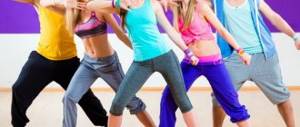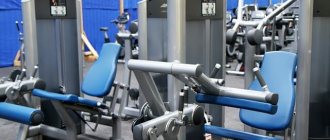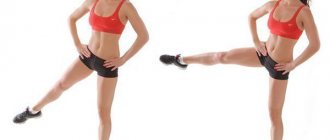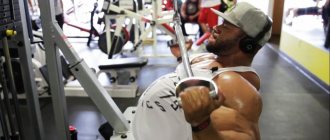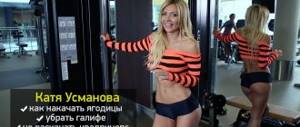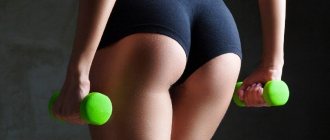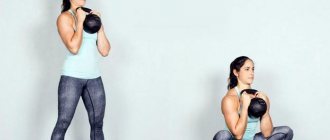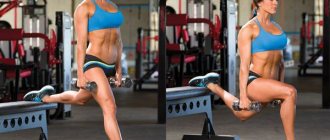Are you tired of your usual fitness workouts? Are you already bored at the gym and feel yourself losing motivation to exercise? Each time you have to persuade yourself more and more not to miss training and not to come up with a new excuse for the coach, why were you not in class again?
Well, this happens to many people. The best solution for you now is to change the type of physical activity. Try something you've never done before. The ideal choice is a type of physical activity that will give you a good mood, energize you and allow you to lose enough calories to maintain or even correct your figure.
What is step aerobics?
One of the options for energetic and fun fitness is step aerobics - training in the rhythm of familiar aerobics to fast rhythmic music, but using a special step platform. This type of fitness was invented and patented back in 1989 by American fitness instructor Jean Miller.
Jean came up with step aerobics while undergoing rehabilitation for a broken leg. Only then did the American trainer use the steps of her own home as a step platform. However, Miller was not at a loss and decided to patent step aerobics as an excellent form of fitness and a means for the rehabilitation of people with musculoskeletal problems.
In the mid-90s of the last century, about 20 million people around the world were already doing step aerobics. Now this figure is much higher. Therefore, we advise you to pay attention to this type of physical activity. It is possible that you will like it or, like the author of the method, will help in rehabilitation.
But before you start training, learn about 7 important rules for doing step aerobics:
Contraindications
Like any type of fitness, step aerobics has contraindications:
- diseases of the cardiovascular system;
- diseases of the leg joints;
- injuries and diseases of the musculoskeletal system;
- hypertension;
- varicose veins;
- too much excess weight;
- pregnancy and postpartum period;
- if you have had too much of a break from fitness.
It is best to consult a doctor before starting exercise to create the right training program.
Follow the technique of performing steps
In all types of fitness, much, including safety, depends on the technique of performing the exercises. In step aerobics, the risk of injury to the ankle and/or knee joint and the effect of training depend on the technique of performing steps.
Simply jumping or standing on a platform to the beat of the music will not work. It is important to place your foot correctly on the platform. The foot should stand completely, and not on the toe or heel.
When descending from the platform, press your heel to the floor, avoiding springs or bounces. During the entire workout, your knees should be slightly bent, your hips and buttocks should be tense, your back should remain straight, and your gaze should be straight ahead.
Do not jump onto the platform at random, just to keep up with the trainer or in an attempt to repeat his movements on time. Always keep an eye on your equipment! It’s better to lag behind the whole group and start with new exercises than to try to keep up despite your strengths and capabilities.
And don’t move too far from the platform, so that you don’t have to approach it every time you move again or take steps from afar.
Basic steps
The basic step is a structural unit of technology. All steps in aerobics are performed with shock absorption at the moment the foot is placed on the floor. You need to move as if on springs, avoiding relaxation or rigid stance of your legs. The foot is placed on the entire foot, rolling from toe to heel with the obligatory placement of the heel on the support. The rotation of the foot is maintained as in the original position.
While performing all steps, the buttocks should be tense, the stomach should be tucked, the back should be straight, the shoulders should be lowered, and the gaze should be directed forward.
It is better to use English terms in the names of aerobics steps. Russian analogues of names are verbose and inconvenient to use when conducting classes.
Step-touch (step-touch) –
side step (right, left). It starts from a half squat on two (Fig. 48). It is performed by stepping to the side with the foot placed (Fig. 49) in various variants (by placing the foot to the foot, on the toe, with the foot to the knee of the supporting leg, with bending the leg back instead of placing it, jumping on two legs, etc.). You can connect 2 steps in one direction. In this case, you can perform the second step with a circle turn and repeat the double step-touch with the same leg, returning to the starting place.
Rice. 48
Rice. 49
Basic-step (basic step) –
side step forward and backward (Fig. 50).
Performed with the same or different legs. Variants of placing the foot - foot to foot, on the toe, on the heel, foot to the knee of the supporting leg, jumping on two legs, etc. You can perform basic-step with a turn, turning in a circle at the moment you put your foot down. In this case, the rotation is carried out in the direction of the attached leg.
Rice. 50
V-step (vi-step) –
right step forward-outward, left step forward-outward, right step back-inward, left step back-inward, putting it towards the right (Fig. 51). A similar step is performed with the left leg. The step can end without placing the foot, with bending the applied leg back, with a jump on two legs, with a jump into a lunge on the leading leg, etc. In aerobics, the leading leg is the one from which the step begins. In our case, this is the right leg.
Rice. 51
Grape -wine (grape wine) –
cross step: right step to the side, left cross step to the right behind, right step to the side, place the left one (Fig. 52). Likewise - to the left. Options for placing the foot: foot to foot, jumping on two legs, foot to knee, toe, heel, bending the leg back at the knee, etc.
Rice. 52
A-step (hey-step) –
right step back-out, left step back-out, right step to the starting position, left step forward, putting it to the right (Fig. 53). Similarly - from the left leg. Attachment options are the same as for V-step.
Rice. 53
Other steps:
Squat (squat) - half squat with legs together or apart. Often this movement is combined with bending the torso forward.
Touch-step (touch step) - performed on two counts in the reverse sequence of the Step touch step: “1” - touch the toe to the floor near the supporting leg. “2” - from the same leg, step to the side into a stance with legs apart.
Scoop is a variant of the side step performed with a jump. “1” - step on the right foot (in any direction). “2” - jump with the other leg.
Touch toe - placing your foot on your toes.
Nouch heel (touch heel) placing the foot on the heel.
Open step (open step) is a type of walking with feet apart or moving from foot to foot with feet apart (slightly wider than shoulder width). Performed on two counts. “1” - transfer the weight of the body to one leg, the knee is bent, but without additional squatting, the heel is on the floor. “2” - the toe of the free leg “presses” on the floor.
Curl (kul) - standing with your feet apart (slightly wider than your shoulders), alternately shifting the body weight from one foot to the other with bending the shin back. Performed on 4 counts. “1” - transfer the weight of the body to one leg, the knee is bent, but without additional squatting, the heel is on the floor. “2” - bend the free leg back (in the direction of the gluteal muscle) “3” and “4” - the same in the other direction.
Side (side) – abduction of the leg to the side.
Back (back) - lifting (extension) of the leg back.
Mambo is a variation of the mambo dance step, performed in 4 counts. “1” - right step in place. “2” - a small step forward with the left (do not completely transfer the weight of the body onto the leg). “3” - transfer the weight of the body to the right leg and stand on it. “4” - return to the starting position (legs apart). Then you can repeat the movement, but with a step back. Another type of mambo step is also used: “1” - right step in place. “2” - a small step forward with the left (the weight of the body on the leg cannot be fully transferred). On “3-4” steps are performed similar to “1-2” counts, but moving backwards.
Hi impact's version of this step is called the Rock step.
Pivot turn - a turn around the supporting leg (pivot point). Performed on 4 counts. One leg remains in place all the time, the other moves around it. “1” - step forward with the right hand (on the entire foot), the weight of the body is evenly distributed on both legs. Then, transferring the weight of the body to the right leg, turn left
around (movement starts from the heel).
“2” - without straightening the supporting leg, transfer the body weight to the left.
“3” and “4” - repeat movements “1” and “2” and return to the starting position.
This step pairs well with the mambo movement.
Pendulum (renjulem) - changing the position of the legs (“pendulum”) with a jump. Jumps are performed in 4 counts. “1” - jump on one leg, take the other down to the side. "2" - jump on two legs. “3”, “4” - repeat the movement in the other direction. More prepared students can perform jumps without an intermediate transition to two legs (from foot to foot).
Chassis, gallop (chassis, gallop) - a type of side step performed at horse races.
Slide (slide) - sliding. Steps performed with the foot sliding along the floor.
Cha-cha-cha is part of the cha-cha-cha dance step. The triple step is a variant of steps with an additional movement between the main counts of music - on the “and” count. “1” is the right step “and” is the left step. "3" - step right.
Twist jump (twist jump) - jumping on two legs with rotations of the pelvis around a vertical axis.
Сross (cross) - “cross” is a variant of the cross step with forward movement. Performed on 4 counts. “1” - step forward with the right hand. “2” is a left cross step in front of the right. “3” – right step back. “4” - step back with your left foot to the starting position.
Keep your steps low impact
There are several types of step aerobics: non-impact, low-impact, high-impact and combined type. If you have recently come to step, then choose non-impact or low-impact types of training.
With these types of activities, one leg will constantly be in contact with the floor, and accordingly, the load on the ankle and knees will become much less. In addition, low-impact workouts involve a low-tempo music and basic aerobic steps. That is, no one will force you to do complex steps and combinations.
High-impact and combined step aerobics are suitable only for advanced steppers who have never previously had a musculoskeletal injury and who train at this pace no more than 2-3 times a week.
High-impact types of training include all steps that involve the simultaneous lifting of 2 feet from the floor - these are all kinds of jumps, changing feet in a jump, fast steps.
Please also note that the higher the tempo of the music to which the exercises are performed, the greater the impact of such steps. To rehabilitate the knees and ankles, you need to take steps slowly, focusing more on technique than on speed.
Guide to step steps without changing lead foot
Basic step - 4 counts
- Step one foot onto the platform.
- Take a platform step with your other foot.
- Lower your first leg to the ground.
- Lower your other leg to the ground.
V-step - 4 counts
- Step with one foot to the opposite corner of the platform, for example, step with your left foot to the right corner.
- A step is taken with the second leg to the opposite corner.
- The first leg falls to the ground.
- The second leg falls to the ground.
Over the top - 4 counts
- Step your first foot onto the platform sideways.
- Step onto the platform with your other foot and simultaneously turn 180 degrees.
- The first leg is lowered from the platform.
- The second leg falls to the ground.
Straddle - 8 counts
- Step sideways onto the platform with one foot.
- Facing the short edge of the step platform, step with your other foot.
- One leg is lowered from the platform on one side.
- The second leg is lowered to the ground on the opposite side of the platform.
- The first foot is placed on the platform again.
- The second leg returns to the platform.
- The first leg falls to the ground in the place from which the movement began.
- The second leg comes down next to the first.
Turn step - 4 counts
- Step your first foot onto the platform.
- Step your other foot onto the platform and at the same time turn your back to the short edge of the step platform.
- The first leg falls to the ground.
- The second one is placed on the ground next to the first leg.
Choose the desired step height
The classic step platform is made of durable plastic with a non-slip rubberized surface that has shock-absorbing properties. All professional step platforms have adjustable height. Some companies produce platforms with a height of 10-15-20 cm, some - 15-20-25 (30) cm.
If you need rehabilitation after sports injuries, then install the platform at a minimum height - this will reduce the load on the lower leg, feet, knees and spine.
People of short stature should also choose a low platform height, otherwise they may be injured due to overload. Don't forget that the higher the level of the platform, the greater the intensity of the training.
For the effect of exercise and burning extra calories, the intensity of step aerobics is, of course, important, but health and safety are much more important. Therefore, do not try to set the platform to the maximum height in order to lose weight faster or show class in front of the group - such bravado is definitely useless.
If the trainer suggests trying difficult steps, then install the platform no higher than 10-15 cm; if strength training is planned, and you are already physically ready for it, then you can install the platform at 20-30 cm.
You can also increase the intensity of your workouts and make step loads more difficult by removing one of the stands - in this case, you will get an imitation of an incline bench.
Recommendations for training
In order for step aerobics classes to be effective and help create an ideal figure, you need to take into account some subtleties.
- While performing the exercises, ensure correct body position. Legs slightly bent at the knees, correct posture, stomach tucked in, gluteal muscles slightly tense, look only forward.
- You need to stand on the platform with your whole foot. The heel should not hang down.
- In step you need to do the exercise in four counts, because you are not only moving on the floor, but also climbing onto the platform.
- There are no reverse steps in this aerobics exercise.
- The higher the platform, the greater the load on the muscles. Gradually add height.
- To make your workout more challenging and more effective, you can add dumbbells.
- Drink a glass of water 30 minutes before your workout and take a few sips throughout your workout.
- You need to start the movement from your feet, and only then do your hands get involved in the work.
If you take all these tips into account, you will perform the exercises correctly and your workout will be productive.
Don't exceed your level of preparedness
Even if you have been training for a long time and can easily lift a barbell weighing 100 kg, this does not mean that you now need to sign up for the most difficult level of step aerobics and try to keep up with the coach and the whole group.
In advanced fitness clubs, step aerobics is divided into training levels: basic step, level 1, level 2 and level 3. At the basic level, the trainer talks about the technique of performing steps in the step and shows basic movements, steps and jumps. There are no high-impact exercises in this level, so it is suitable for rehabilitation and beginners in step aerobics.
Level 1 is designed for those who have previously practiced step and understand the basic principle of training and technique. Levels 2 and 3 are for advanced steppers who have good physical training, are fluent in the technique of performing steps and can easily withstand the fast pace of training.
You should not sign up for levels 2 and 3 if you have only heard about step aerobics from someone before. Your excellent physical condition and athletic ability will not help if you do not know the technique of steps and do not pump yourself at a slower pace.
Choose the right shoes for step dance
A lot depends on shoes in step aerobics. Here you won’t be able to exercise in socks, moccasins, Czech shoes or ballet shoes. The best shoes for step aerobics are professional running shoes with springy, shock-absorbing soles.
Running shoes cover the ankle well and do not slip on the surface of the step platform, which prevents injury. And additional foot ventilation and “air pockets” under the heel will make step training as comfortable as possible.
Please note that for step aerobics you need to choose running shoes with a special pad on the foot - it will smooth out the impact of the foot on the platform.
Benefits of training
What is step? These are not just fun activities with music that improve your mood and give you a boost of energy. Thanks to step aerobics classes:
- All muscle groups are strengthened.
- Increases endurance.
- The functioning of the nervous, respiratory and cardiovascular systems improves.
- Blood pressure is normalized.
- The functioning of the vestibular apparatus improves.
- The figure becomes toned and extra calories are burned during training.
- The overall tone of the body increases.
Despite the fact that some people believe that step aerobics consists only of simple exercises, there are subtleties that need to be taken into account when creating a training program.

